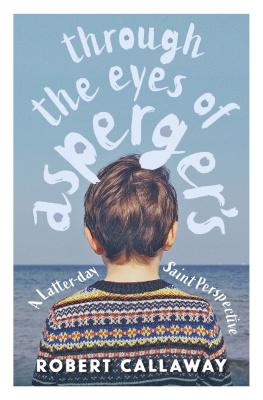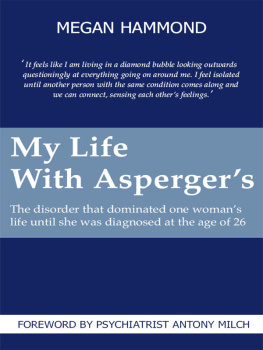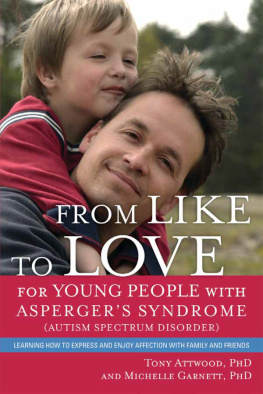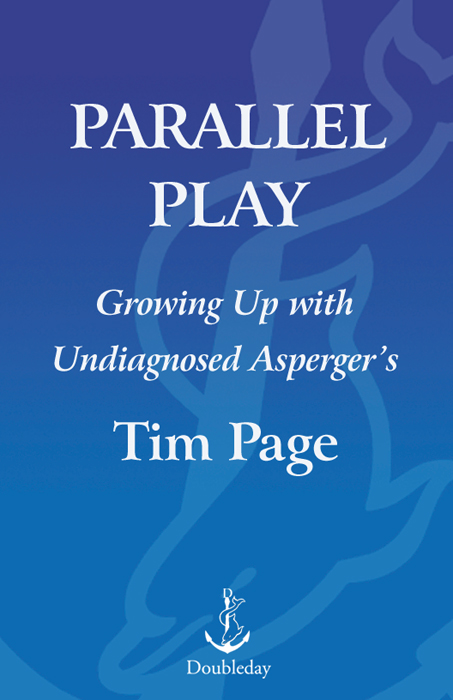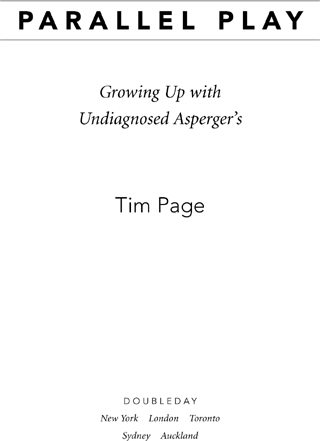For my sons, William, Robert, and John, with the hope
that this book may explain some thingsand for
Philip Glass, with affection and gratitude.
Be kind, for everyone you meet is fighting a great battle.
Anonymous, often attributed to Philo of Alexandria
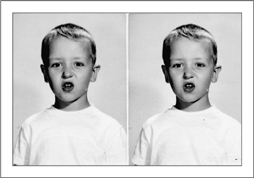
Kindergarten class photo, Ypsilanti, Michigan. Try as I might, I couldnt remember how to smile.
PROLOGUE
My second-grade teacher never liked me much, and one assignment I turned in annoyed her so extravagantly that the red pencil with which she scrawled See me! broke through the lined paper. Our class had been asked to write about a recent field trip, and, as was so often the case in those days, I had noticed the wrong things:
Well, we went to Boston, Massachusetts through the town of Warrenville, Connecticut on Route 44A. It was very pretty and there was a church that reminded me of pictures of Russia from our book that is published by Time-Life. We arrived in Boston at 9:17. At 11 we went on a big tour of Boston on Gray Line 43, made by the Superior Bus Company like School Bus Six, which goes down Hunting Lodge Road where Maria lives and then on to Separatist Road and then to South Eagleville before it comes to our school. We saw lots of good things like the Boston Massacre site. The tour ended at 1:05. Before I knew it we were going home. We went through Warrenville again but it was too dark to see much. A few days later it was Easter. We got a cuckoo clock.
It is an unconventional but hardly unobservant report. In truth, I cared not one bit about Boston on that windy spring day in 1963. Instead, I wanted to learn about Warrenville, a village a few miles northeast of the township of Mansfield, Connecticut, where my family was then living. I had memorized the map of Mansfieldavailable for one dollar from our municipal officeand knew all the school-bus routes by heart, a litany I sang out to anybody I could corner. But Warrenville was in the township of Ashford, for which I had no guide, and I remember my blissful sense of resolution when I verified that Route 44A crossed Route 89 in the town center, for I had long hypothesized that they might meet there. Of such joys and pains was my childhood composed.
I received a grade of Unsatisfactory in Social Development from the Mansfield Public Schools that year. I did not work to the best of my ability, did not show neatness and care in assignments, did not cooperate with the group, and did not exercise self-control. About the only positive assessment was that I worked well independently. Of course. Then as now, it was all that I could do.
In the years since the phrase became a clich, I have received any number of compliments for my supposed ability to think outside the box. Actually, it has been a struggle for me to perceive just what these boxes werewhy they were there, why other people regarded them as important, where their borderlines might be, how to live safely within and without them. My efforts have only partly succeeded; at the age of fifty-three, I am left with the melancholy sensation that my life has been spent in a perpetual state of parallel play, alongside, but distinctly apart from, the rest of humanity.
From early childhood, my memory was so acute and my wit so bleak that I was described as a geniusby my parents, by neighbors, and even, on occasion, by the same teachers who handed me failing marks. I wrapped myself in this mantle, of course, as a poetic justification for behavior that might otherwise have been judged unhinged, and I did my best to believe in it. But the explanation made no sense. A genius at what? Were other geniuses so oblivious that they needed mnemonic devices to tell right from left, and idly wet their pants into adolescence? What accounted for my rages and frustrations, for the imperious contempt I showed to people who were in a position to do me harm? Although I delighted in younger children, whom I could instruct and gently dominate, and exulted when I ran across an adult who was willing to discuss my pet subjects, I could establish no connection with most of my classmates. My pervasive childhood memory is an excruciating awareness of my own strangeness.
And so, between the ages of seven and fifteen, I was given glucose-tolerance tests, anti-seizure medications, electro-encephalograms, and an occasional Mogadon tablet to shut me down at night. I suffered through a summer of Bible camp; exercise regimens were begun and abandoned; the school brought in its own psychiatrist to grill me once a week. Somehow, every June, I was promoted to the next grade, having accomplished little to deserve it. Meanwhile, the more kindly teachers, recognizing that I would be tormented on the playground, permitted me to spend recess periods indoors, where I memorized vast portions of the 1961 edition of the World Book Encyclopedia simply by skimming through its volumes.
A brown carton in my basement contains most of the surviving documents of my elementary-school years, and they present a pretty fair portrait of my preteen obsessions. There are intricately detailed street maps of make-believe cities on which I worked silently for hours; countless crayon drawings of grinning girls with shoulder-length hair and U-shaped smiles, their stick figures fleshed out only by exaggerated biceps; obituaries of Sophie Tucker, Edward R. Murrow, and David O. Selznick torn from the Hartford Courant and pasted sloppily into a scrapbook; any number of meandering and implausible stories, none of them with happy endings.
In my darker moods, I think that the rest of my life can be quickly summarized: I grew up and into other preoccupations, some of which served me well, without ever managing to admit the full tide of human experience.
I was told that I had Aspergers syndrome in the fall of 2000, as part of what had become a protracted effort to identifyand, if possible, alleviatemy lifelong unease. I had never heard of the condition, which had been recognized by the American Psychiatric Association only six years earlier. Nevertheless, the diagnosis was one of those rare clinical confirmations met mostly with relief. Here, finally, was an objective explanation for some of my strengths and weaknesses, the simultaneous capacity for unbroken work and all-encompassing recall, linked inextricably to a driven, uncomfortable personality. And I learned that there were others like mepeople who yearned for steady routines, repeated patterns, and a few cherished subjects, the driftwood that keeps us afloat.
The syndrome was identified, in 1944, by Hans Asperger, a Viennese pediatrician, who wrote, For success in science or art, a dash of autism is essential. In Aspergers Syndrome: A Guide for Parents and Professionals, Tony Attwood observed, The person with Aspergers syndrome has no distinguishing physical features but is primarily viewed by other people as different because of their unusual quality of social behavior and conversation skills. For example, a woman with Aspergers syndrome described how as a child she saw people moving into the house up the street, ran up to one of the new kids and, instead of the conventional greeting and request of Hi, you want to play?, proclaimed, Nine times nine is equal to 81.
David Mamet, in his book



